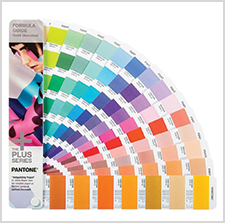4 Misconceptions About Extended Gamut Printing
September 18, 2019
Extended gamut (also known as seven-color process) printing is a term that has most likely been mentioned to many brand owners such as yourself. Your packaging supplier (*hand raise*) has brought this up a time or two in past discussions, but why? As a brand owner, you spend time, effort, and many sleepless nights nailing down the perfect color for your brand, your product, and most importantly your packaging. We respect that taking that brand color and converting it to process colors (cyan, magenta, yellow, black) plus extended gamut colors (blue, green, and orange) can be unnerving, but that is why we are here today. We want to put your mind at ease and debunk the misconceptions that you may have in your head about extended gamut printing.
“Color Won’t Be Consistent…”
False. The operations team here at Inland would actually say, that we are MORE consistent when printing in extended gamut. Inland has been around for over 75 years, and in that time printing has transformed dramatically. We’ve had decades of experience in custom color printing that aligns with our 4 color process system, but we knew we needed more. We developed an extensive color system, InColor (download infographic) that offers confidence with a color control that is consistent to preserve brand integrity. After the first production run of a color, it is locked into our system to ensure the repeatability of the color for all future orders.
“You’ll Never Hit Our Color…”
Brand colors are a commitment. You make a choice, and you go all-in with the perfect brand color. WE will admit, some colors are more difficult than others, but that doesn’t mean it isn’t possible. There are 1,729 colors in the Pantone+ Digital Library, and 82% of them can be converted to 7CP under a dE of 2, only 1% of colors would convert over a dE of 6…that’s only 17 colors! You let us do the dirty work, we can work through 17 colors that may be considered “hard” to convert to extended gamut.
“There is no benefit to extended gamut printing for me…”
We’ve hit on a few of the added benefits to extended gamut above, but one we haven’t discussed yet is cost. Printing using spot colors can add significant costs to your order. Each time your item prints, a custom bucket of ink needs to be mixed. What if your label has more than one spot color? That’s another bucket… and if each SKU has multiple spot colors, get your mixing buckets ready because that is added time and make ready to get your job on press. Our extended gamut inks are colors on the spot, and can typically be kept in the press for numerous jobs in a row to minimize the additional time for changeover. We print in combination, meaning we can print up to 14 SKUs up on a sheet, which we are able to optimize when all of your SKUs are converted to only seven inks. Larger jobs equal better efficiency and ultimately better pricing for you.
“It’ll take too long…”
So, all of your labels are already set up to run as spot colors, and you are worried it would take too long to convert everything to extended gamut. Have no fear, a great majority of our color conversion process can happen quickly behind the scenes and with ease. There are options to choose from for the best method to go about the conversion process based on where you are at the process with Inland. Are you already changing your graphics because of the upcoming nutrition facts regulation change? If so, this is the perfect opportunity to make the conversion! The artwork process itself works exactly the same as any other new SKU being processed through our system. The proof that you would receive would be color accurate for all seven colors so that you know exactly what your label will look like coming off the press.
In the end, your ultimate goal is to have the best product packaging sitting on the shelf. We stand by your side with the same end goal in mind. We want to provide you with the most impactful packaging to build your brand to stand out against the competition. We know that once the consumer picks your package off the shelf, your product will do the rest.



